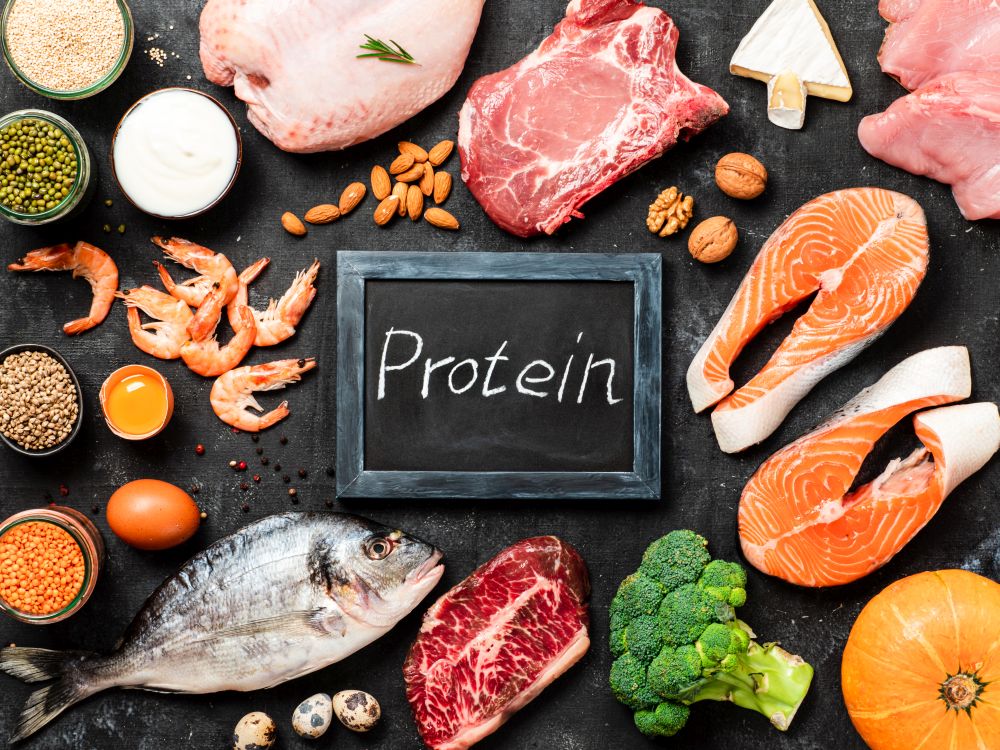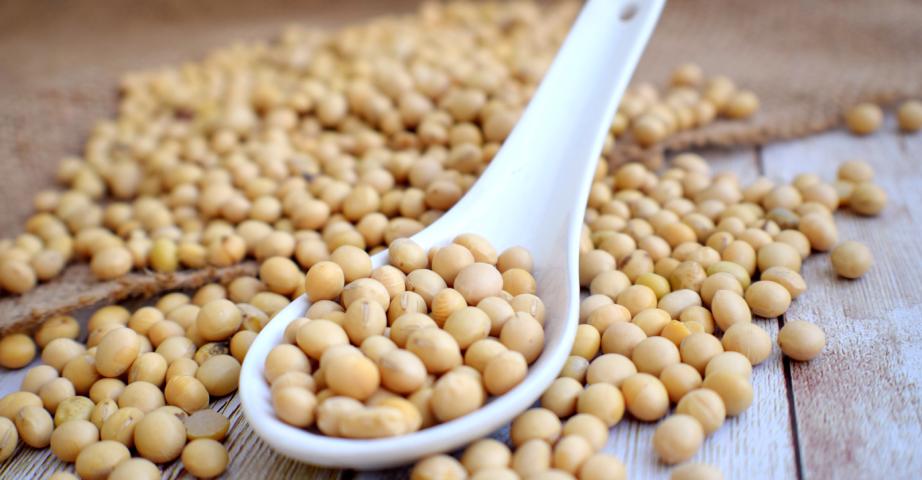What has a lot of protein? The best sources of protein in your diet!

Your daily diet should contain protein. You are probably wondering what to eat to provide yourself with adequate amounts of this macronutrient. What has a lot of protein? Are products rich in protein only lean meat and eggs? Does milk really contain much protein?
What has a lot of protein? Complete and incomplete sources of protein
When composing your daily meals, it's helpful to know what's high in protein. High-protein foods include meat, fish, seafood, cheese, cottage cheese, eggs, pulses, nuts, seeds, and to lesser extent cereal products. In contrast, vegetables, fruit and oils are products that contain no or very little protein.
Protein from food is divided into complete and incomplete basing on its absorption, the body's ability to use it for synthesising proteins and their location. In general, animal products contain complete proteins while plant products contain incomplete proteins. It is commonly believed that by eating meat, fish, eggs and dairy products, it is easier to meet the body's protein requirements. However, this does not make every animal product high in protein, and plant products lower in it. They differ in assimilability. A complete protein is assimilated by 90-96%, and incomplete protein by 70-85%. An exception is soya, which has a digestibility rate of 90%, even though it provides semi-complete protein.
Recommended protein products
Where can you find protein? Animal products
What has a lot of complete protein? The common belief is that chicken breast, as lean poultry meat, has the most protein per 100 g (21.6 g/100 g). However, the same amount is contained in beef silverside (22 g/100 g), and even more in prawns (27 g/100 g). Besides, other meats contain slightly less protein and add variety to the diet. Offal provides around 18 g of protein per 100 g and meat around 20 g. And let's not forget fish, which has 15-20 g of protein in 100 g of fresh product. Remember that after heat treatment, the amount of protein in 100 g of meat and fish increases because they lose water.
Excellent protein sources are all meats, fish and seafood. But what else has a lot of protein? Concentrated sources are yellow cheeses (approx. 25 g/100 g), mouldy cheeses (approx. 20 g/100 g), curd (approx. 19 g protein/100 g) and cottage cheese (approx. 12 g/100 g). The egg also has a lot of protein. In addition, its amino acid composition is so similar to the human body proteins that for a long time egg whites were considered to be the model proteins and were compared to the nutritional value of other protein products. Interestingly, egg yolk contains more protein (16 g/100 g) than egg white (11 g/100 g).
Is milk high in protein? It contains much less than it is commonly thought. 100 ml of milk contains around 4 g of protein, the same as 100 ml of natural yoghurt and buttermilk. Compared to cheese, cottage cheese, fish and meat, milk does not contain high amounts of protein.
Plant products containing protein

Which plant products are high in protein? The best sources of incomplete proteins are pulses, and soya is the most important one, containing approximately 34 g/100 g. Answering the question of what has the most protein, we can honestly say that the product richest in protein is soya. However, it should be remembered that protein from soya is absorbed slightly worse than complete protein from meat or fish. What else contains protein? Dried pulses provide 20-25 g of protein per 100 g. Pistachios, almonds and cashew nuts are high in protein (around 20 g/100 g) , walnuts, hazelnuts and peanuts slightly less (around 14 g/100 g).
Which cereal products contain protein? In the first place, there are groats and rice, but also flour products such as bread and pasta. Rice contains about 7 g protein/100 g, semolina - 10.5 g/100 g, buckwheat - 12.6 g/100 g and wholemeal bread - 5.9 g/100 g.
It is important to know that the protein value refers to dry pulses and dry cereal products before cooking. Therefore, after cooking and swelling with water, the amount of protein per 100 g of a product decreases.
What has the most protein? Table of high-protein products
If you want to eat properly and make sure you get the right amount of protein in your diet, it's good to know where proteins are present and what foods are rich in them. The basic rule should be a well-balanced diet, which provides diet from a variety of sources - animal and plant. Do not focus on just one group of products, as this can lead to other nutritional deficiencies - insufficient intake of minerals and vitamins - even though they cover the recommended amount of protein in the diet.
You already know the food groups that contain protein. Below, you will find a table that shows examples of products that have the most to offer:
| Food product | The amount of protein per 100 g | Amount of protein per serving |
| Skinless chicken breast, cooked | 32,1 g | 54.5 g protein in 180 g of product |
| Lean pork loin, roasted | 31 g | 52,7 g in 180 g of product |
| Tuna, cooked fillet | 29,9 g | 50,8 g in 180 g of product |
| Pumpkin seeds | 29,8 g | 8,5 g per bunch of product |
| Yellow cheese | 28,8 g | 4,3 g in one slice |
| Beef, roast steak | 28,7 g | 48,7 g in 180 g of product |
| Tofu | 17,3 g | 43,5 g in a glass of product |
| Cooked soya | 15,8 g | 23,7 g in a glass of product |
| Whole egg, boiled | 12,6 g | 6,3 g in one egg |
| Red lentils, bioled | 9 g | 17,9 g in a glass of product |
